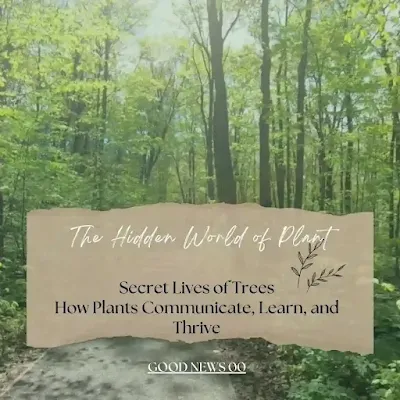Exploring the Secret Lives of Trees: How Plants Communicate, Learn, and Thrive
In the serene realm of forests, trees stand tall as silent witnesses to the wonders of nature. However, beneath their stoic exteriors lies a world of intricate communication, learning, and survival strategies that have captivated scientists and nature enthusiasts alike. This article delves into the fascinating realm of plant intelligence, exploring how trees communicate, learn from their environment, and thrive in diverse ecosystems.
The Hidden World of Plant Communication:
Contrary to popular belief, plants are not passive organisms but rather active participants in complex networks of communication. Trees utilize an array of chemical, electrical, and even acoustic signals to interact with their surroundings and communicate with each other. Through underground fungal networks known as mycorrhizal networks, or "wood-wide webs," trees exchange nutrients, water, and information with neighboring plants, forming a symbiotic community known as the "wood wide web." This interconnected network allows trees to warn each other of impending threats, share resources during times of scarcity, and even recognize and support their offspring.
Learning and Adaptation in Trees:
While lacking a central nervous system, trees exhibit remarkable abilities to learn from their environment and adapt to changing conditions. Through mechanisms such as epigenetics and phenotypic plasticity, trees can alter their gene expression and physical characteristics in response to environmental cues, such as changes in light, temperature, or nutrient availability. This adaptive flexibility enables trees to thrive in a wide range of habitats, from dense forests to arid deserts, and to withstand environmental stressors such as drought, pathogens, and herbivores.
The Role of Chemical Signaling:
Chemical signaling plays a crucial role in plant communication and defense mechanisms. Trees release volatile organic compounds (VOCs) into the air when under attack by herbivores or pathogens, signaling neighboring plants to prepare for potential threats. This "plant language" enables trees to coordinate their defenses and mount a collective response against common enemies. Additionally, trees can release allelopathic compounds into the soil to inhibit the growth of competing plants, giving them a competitive advantage in resource acquisition.
The Power of Root Communication:
Root systems serve as vital communication hubs for trees, allowing them to exchange information and resources below ground. Through the secretion of root exudates, trees can attract beneficial microorganisms, such as nitrogen-fixing bacteria and mycorrhizal fungi, to enhance nutrient uptake and soil fertility. Furthermore, recent research has revealed that trees can transmit electrical signals through their root networks, enabling rapid responses to environmental stimuli and facilitating long-distance communication between distant parts of the forest.
The Wisdom of Ancient Trees:
Ancient trees, with their vast root systems and centuries-old wisdom, serve as guardians of forest ecosystems and repositories of ecological knowledge. These venerable giants have weathered countless storms, witnessed the rise and fall of civilizations, and adapted to ever-changing environments through millennia of evolutionary history. By studying the growth patterns, genetic diversity, and ecological interactions of ancient trees, scientists can uncover valuable insights into the resilience and sustainability of forest ecosystems in the face of climate change and human disturbance.
Conservation Implications:
Understanding the complex dynamics of tree communication and intelligence has profound implications for forest conservation and management practices. By recognizing the interconnectedness of trees within forest ecosystems, conservationists can implement strategies to protect biodiversity, restore degraded habitats, and mitigate the impacts of deforestation and climate change. Furthermore, fostering a deeper appreciation for the intrinsic value of trees and forests can inspire individuals and communities to take action to preserve these invaluable ecosystems for future generations.
Conclusion:
The exploration of the secret lives of trees reveals a world of wonder and complexity beyond our imagination. From the silent whispers of mycorrhizal networks to the ancient wisdom of towering giants, trees remind us of the interconnectedness of all life on Earth and the importance of preserving the natural world for generations to come. By delving into the mysteries of plant communication, learning, and adaptation, we gain a deeper appreciation for the resilience and intelligence of these silent sentinels of the forest.
